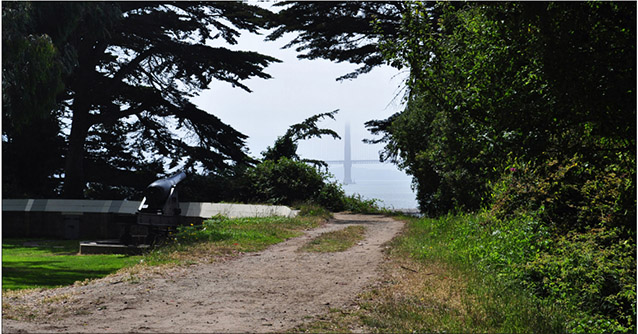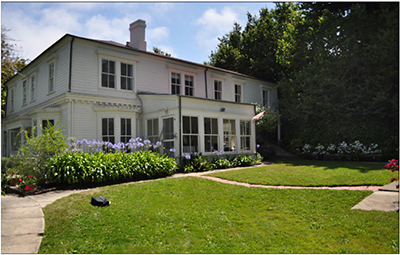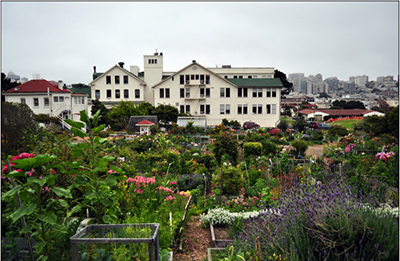Fort Mason is a green sward within the dense urban grid of San Francisco, perched on a point of land on the northern tip of the San Francisco peninsula at the edge of the San Francisco Bay. Fort Mason’s 68.5 acres are but one small sub-unit of the immense Golden Gate National Recreation Area (GGNRA). The military structures on site date from the 1850s through the 1950s and illustrate the evolution of military landscape planning and architecture over a one hundred year period.

NPS

NPS
The Fort Mason cultural landscape is composed of Upper and Lower Fort Mason, totalling 68.5 acres. The area was first occupied by the Ohlone, then in the eighteenth century by the Spanish, and in the nineteenth century by the United States. Lower Fort Mason consists of the wharves and sheds built on filled land reclaimed from the bay in the early twentieth century. Beginning in 1911, these facilities at Lower Fort Mason became an important component of the Army's Port of Embarkation, expediting personnel and materiel into the Pacific.
The Fort Mason Historic District is nationally significant for the years between 1855 and 1953. The district includes a wide range of designed and vernacular historic landscape resources that include vehicular and pedestrian circulation systems, buildings, batteries, and vegetation developed by the U.S. military during their one hundred year inhabitation of the site.

NPS
The period of significance, 1855-1953, originates with the construction and civilian settlement of the area during California's Gold Rush and ends with the cease-fire ending the Korean Conflict. The extant above-ground cultural resources at Fort Mason are survivors of one-hundred years of United States military history. Fort Mason has evolved over a period inclusive of the American Civil War, the Indian Wars of the American West of 1865-1890, the Spanish-American War, World War I, World War II, and the Korean Conflict.
Fort Mason retains integrity reflecting the entire period of significance. Fort Mason's setting has remained relatively consistent since the late 1920s to early 1930s, when the neighborhood surrounding the property became fully urbanized, and retains its quality as an enclave isolated from the surrounding city. The following landscape characteristics contribute to the significance of the historic district’s cultural landscape: Natural Systems, Spatial Organization, Topography, Circulation, Buildings and Structures, Vegetation, Small Scale Features, Views and Vistas, and Archeological Sites.
Quick Facts
- Cultural Landscape Type: Historic Site
- National Register Significance Level: National
- National Register Significance Criteria: A,C,D
- National Historic Landmark
- Period of Significance: 1855-1953
Landscape Links
-
Upper Fort Mason Cultural Landscape Report, Volume II: Treatment Strategy
-
National Register of Historic Places: Fort Mason Historic District
- Library of Congress: American Memory Collection
- NPGallery Album
- Landscape Flickr Album
Last updated: December 30, 2020
